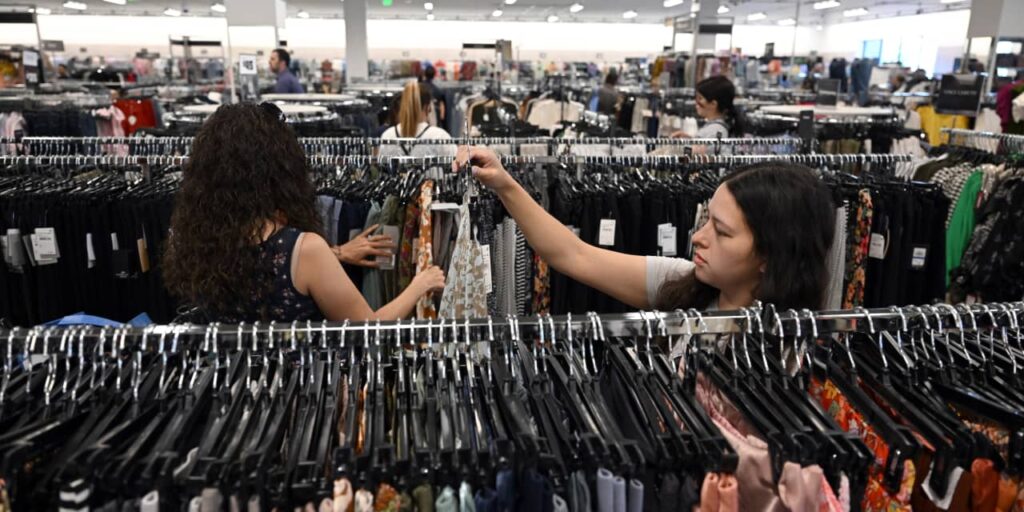September retail sales came in hotter than expected for the third consecutive month, suggesting consumer demand remains unhampered by macroeconomic volatility.
Retail sales rose by 0.7% month over month in September, barreling past the consensus call for a 0.3% increase among economists polled by FactSet. August’s figure was revised higher to a 0.8% gain from 0.6%.
Stripping away autos and fuel, sales rose by 0.6%. Economists were forecasting a 0.2% increase.
“Despite low consumer sentiment and numerous economic concerns, this report doesn’t indicate that a recession is near,” said Ted Rossman, industry analyst at Bankrate. “Consumer spending remains remarkably resilient and is actually accelerating in discretionary categories such as dining and big-ticket items such as new cars.”
As in August, higher oil prices lifted the headline figure in September. Sales at gasoline stations were up 0.9% from August. But the gains were “far broader than that,” noted Michael Pearce, lead U.S. economist at Oxford Economics.
Kayla Bruun, senior economist at Morning Consult, noted that lower inflation helped blunt the negative impacts of higher gasoline prices and interest rates on spending. In the latest consumer price index report, growth in core prices, which strips out food and energy categories, slowed to an annual 4.1% rate in September from August’s 4.3%.
And indeed, spending increased across most categories last month. The biggest gain, at 3%, came from miscellaneous retailers, a category that includes florists and sellers of stationery among other stores. Sales at nonstore retailers were up 1.1%, while auto dealers gained 1.1%.
Electronic stores and clothing stores saw the biggest declines. Sales at both were down 0.8% last month.
What is more, sales in the so-called control group, which feeds into the calculation of gross domestic product and excludes cars, gasoline, building materials, and food services, were also higher than projected. Control sales rose by 0.6% last month, ahead of forecasts for a 0.1% uptick.
“The strength in spending at the end of Q3, alongside continued solid job gains, mean the economy is entering Q4 with more momentum than we previously thought,” Pearce wrote.
That bodes well for retailers heading into the important holiday season. But stocks fell and bond yields rose as investors worried that the report’s strength increased the odds that the the Federal Reserve will keep raising interest rates in upcoming meetings.
“Economic growth will remain above expectations and the Federal Reserve will remain in a defensive position to prevent an acceleration in inflation even though the disinflationary trend we have seen since the summer of last year has, for the most part, remained intact,” wrote Eugenio Aleman, chief economist at Raymond James.
The stock market was trading lower following Tuesday’s release. The
S&P 500
futures was down 0.8%, the
Dow Jones Industrial Average
slipped 0.2%, and the
Nasdaq Composite
fell 1.3%.
Write to Sabrina Escobar at [email protected]
Read the full article here













